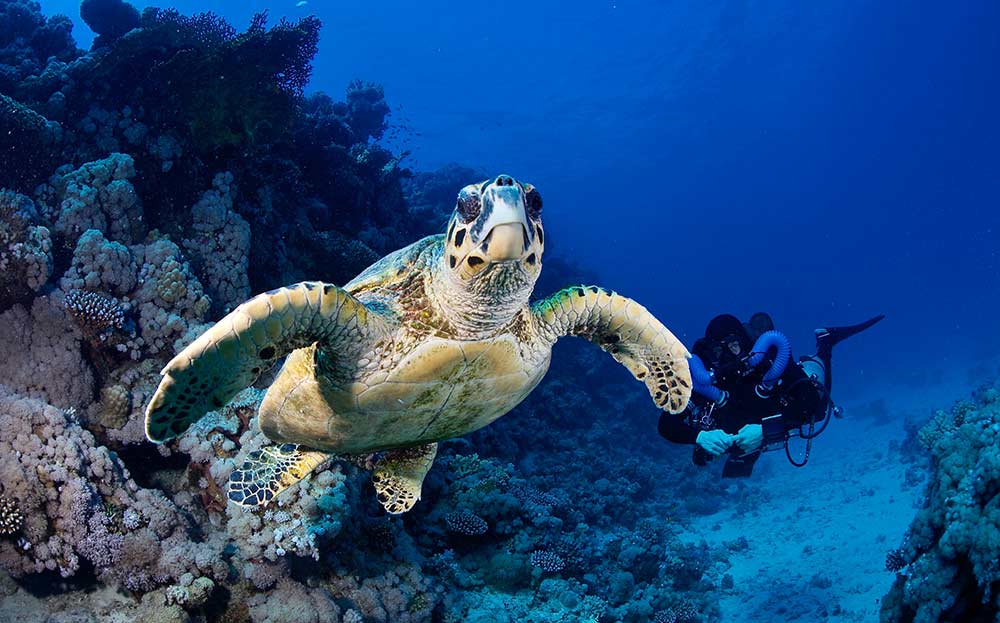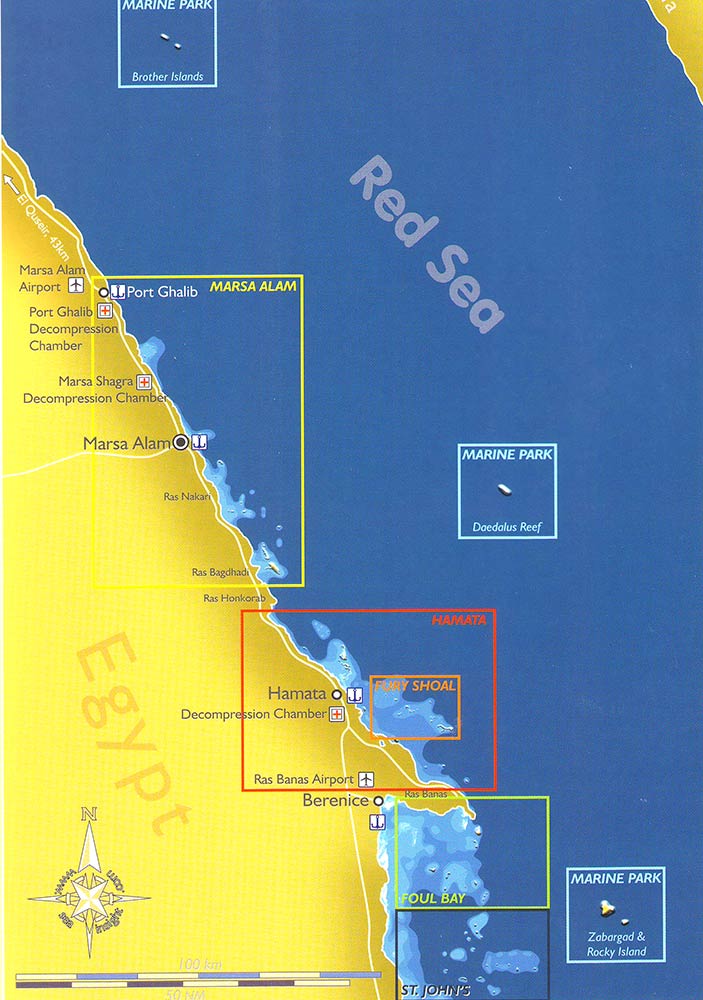South Trips
ST. JOHN

St. John’s reefs lie on the tropic of cancer, south of Ras Banas. Between the coast and Zabarged Island, almost 150km south of Marsa Alam.
St john covering an area of 290 km2 and offer the greater diversity of diving Red Sea. Its astonishing coral walls, coral garden, and caves.
The depth of St. John goes down to 200m which attract lots of reef sharks. also, Hammerhead, Oceanic whitetip and thresher sharks. Other pelagic creatures found in the area as bottlenose Dolphins, Sea turtles, Jacks, Tuna and Barracudas.
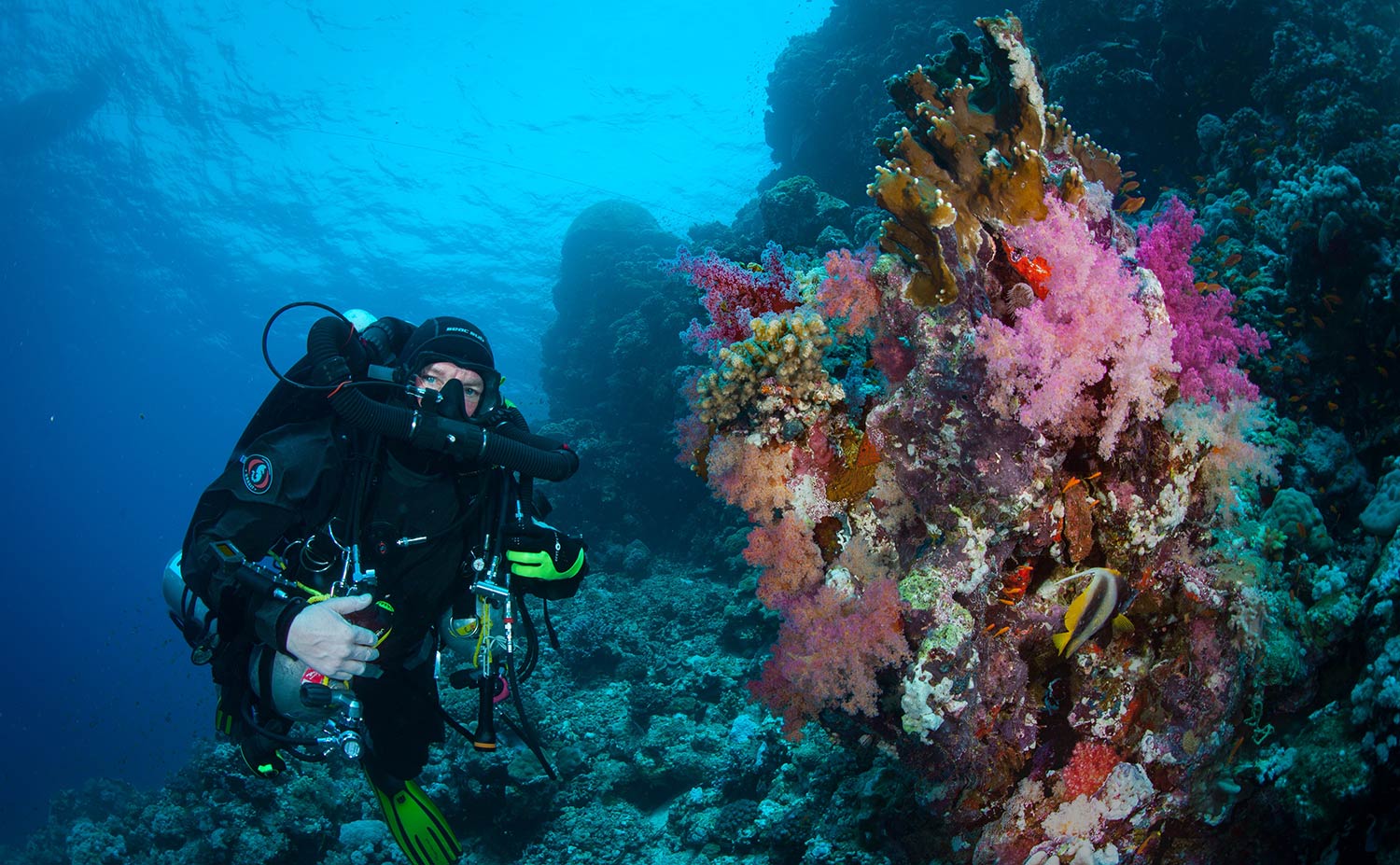
HABILI ALI
Habili is the Arabic word for a reef which never breaks the surface
is an oval shaped reef and is the easternmost diving point of St. John’s. Its walls and ridges are full of beautiful coral, with great specimens of elkhorn coral, blue coral, large gorgonian fans, many whip corals and black coral forests. Drift diving is the best way to admire the inlaid coral and reef fish living in the steep walls.

Habili Jaffar
Very small oval shaped reef. Habili Jaffar’s top is permanently 3 to 4 meters from the water surface. With deep walls dropping away on all sides this is an ideal spot for some big pelagic action. Schools of barracuda, jacks and trevallies tend to form on the northern side, where the current can be strong (sweeping from north to south). White-tip sharks and even grey reef sharks are a distinct possibility.
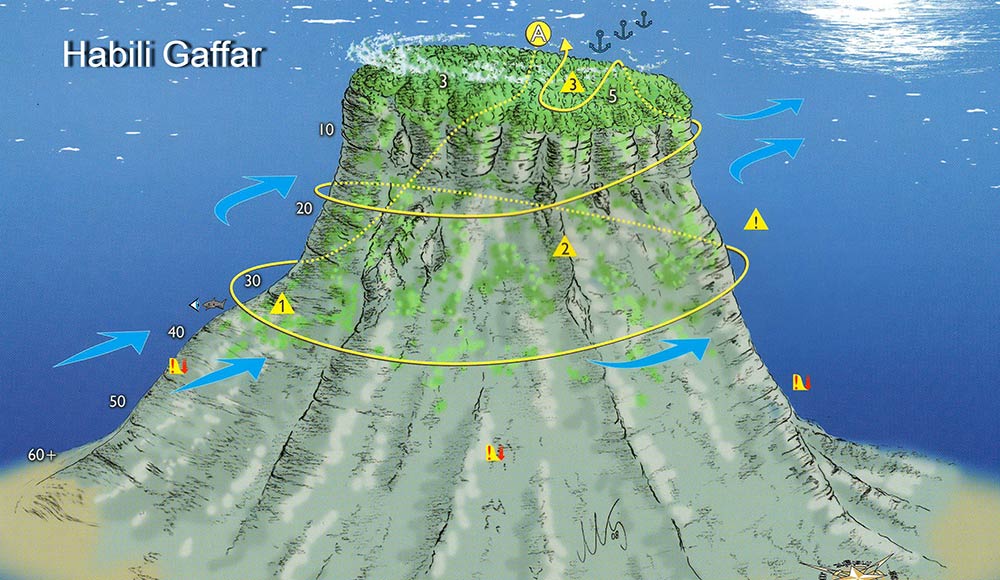
Dangerous Reef
The most south dive site at St. John area, it takes a diamond shape. the south tip of the diamond there is a sandy sloping bottom with hard coral down to 30m. the main reef have some fissures making small tunnels, some of the tunnels have full overhead environment, but you are never far from visible exit. Out of the tunnels east or west a good coral garden.
Dangerous reef best chose after the deep dives and offer us shelter for the night and excellent night dive.

Gotta Soghair
Small reef with the best drops off at the area, all the sides are slope off and droop off to deep, covered with soft coral, gorgonian and black coral growing on the walls. The south edge of the reef is full of hard coral and conical shaped coral.
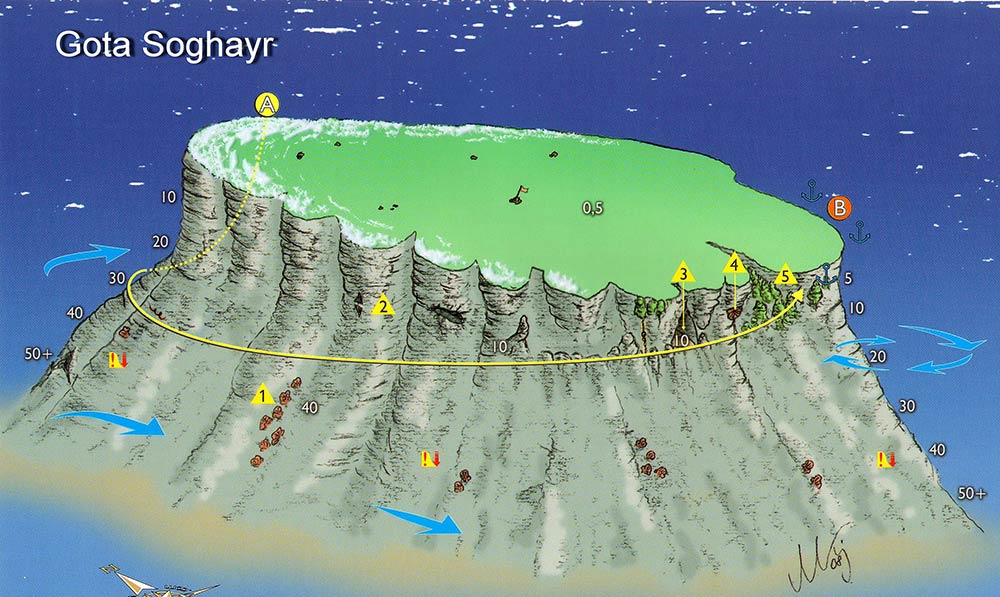
St John’s cave
An area where shallow cracks open into small caverns, which natural light allow easy penetration, caves hang up at depth 3-8m.
St. John’s Area more than 20 dives site we chose the best following the weather condition like Gotta Kabira, Abu Bassala, Umm Erouk
St. John can be integrating with another route such Daedalus reef or Rocky and Zabarged Island.
All divers’ level can join south route, beginner can miss couple of dives
It is possible to dive in South of Red Sea all year round
Coldest water occurs in January and is about 24°C
Summertime water temperature about 30°C!

Fury Shoals
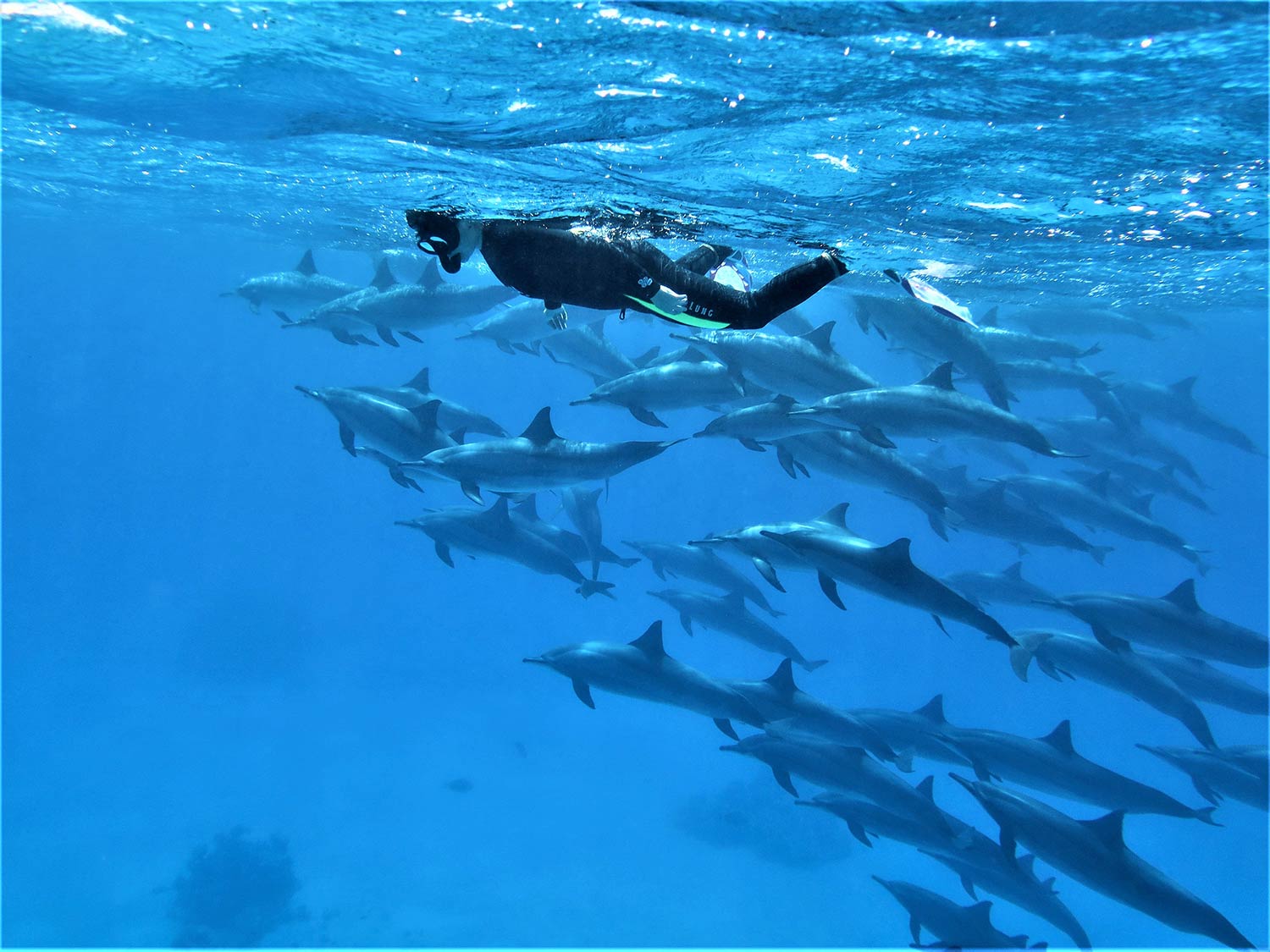
Located 150 KM south of Marsa Alam, 20 dive sites rich in Shallow, deep, drop off, drift, lagoon and carven offers great dives to all level and experience
Sataya
(Dolphin Reef) very large horseshoe shaped reef. out part drop off, inner part shallow sand lagoon – perfect conditions for dolphin
East site is mix of drop off, pinnacles, stony plateau, and coral garden.
Sataya become the most famous destination for free diving and snorkeling trips

Maksur
Very tiny reef, 800m long reef surrounded by steep walls, which meet the seafloor at a depth of 100 m.
South end is large plateau 15-35m covered with amazing soft coral and 2 large pinnacles, the edge is ideal for shark sightings since they often patrol there.
Northern side is sloping reef walls form an elongated plateau starting at 25 m that drops into the depths at 40 m.
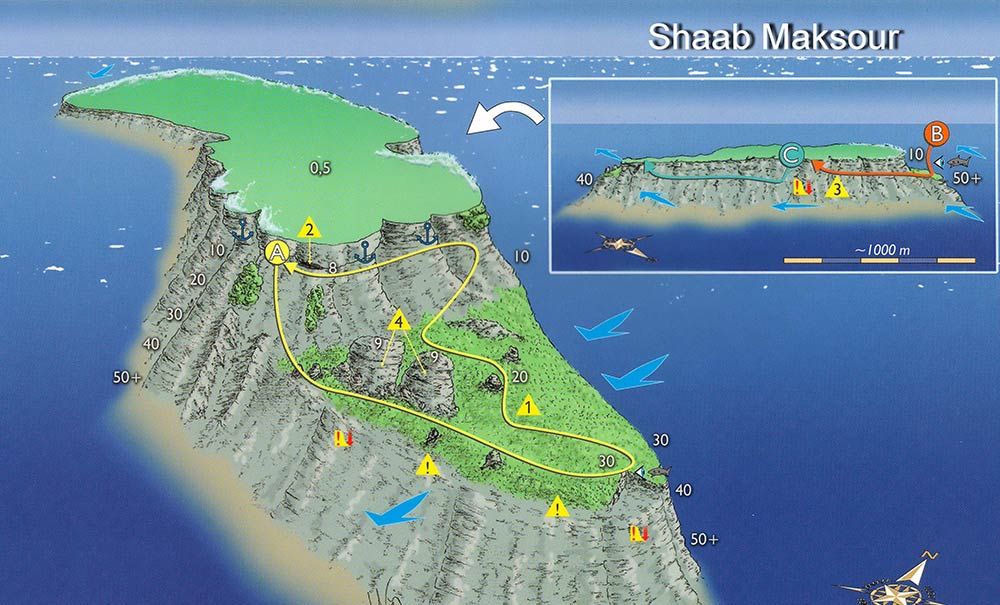
Malahi
Surrounded reef hang at sandy seabed at a depth 18 to 20 m. The reef formation is like a playground of craggy corals with 6-8m depth.
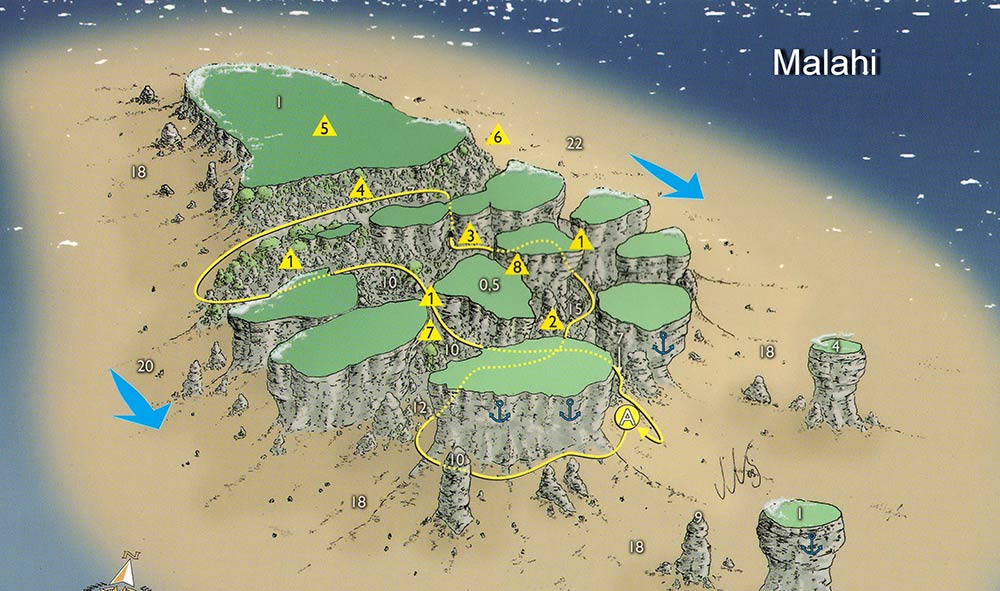
Claudia
Small reef hanging at sandy bottom at depth 20m, The west side of the reef features an abundance of beautiful hard coral formations with stony and boulder corals. Southern side of the system there is a spacious cavern with an opening in the ceiling, allowing the sunlight to penetrate and create a fascinating atmosphere inside the cavern.
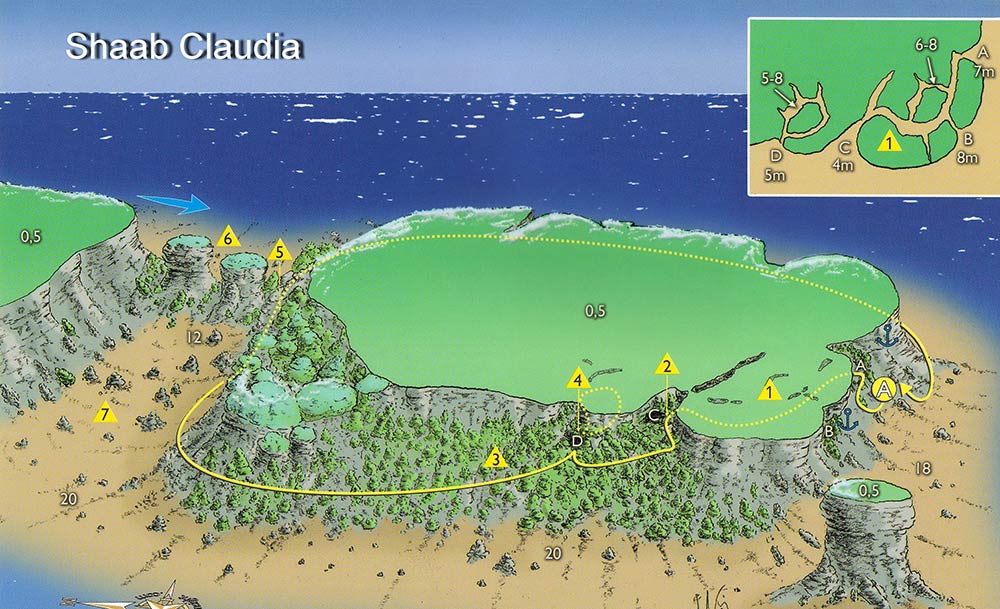
Marsa Alam
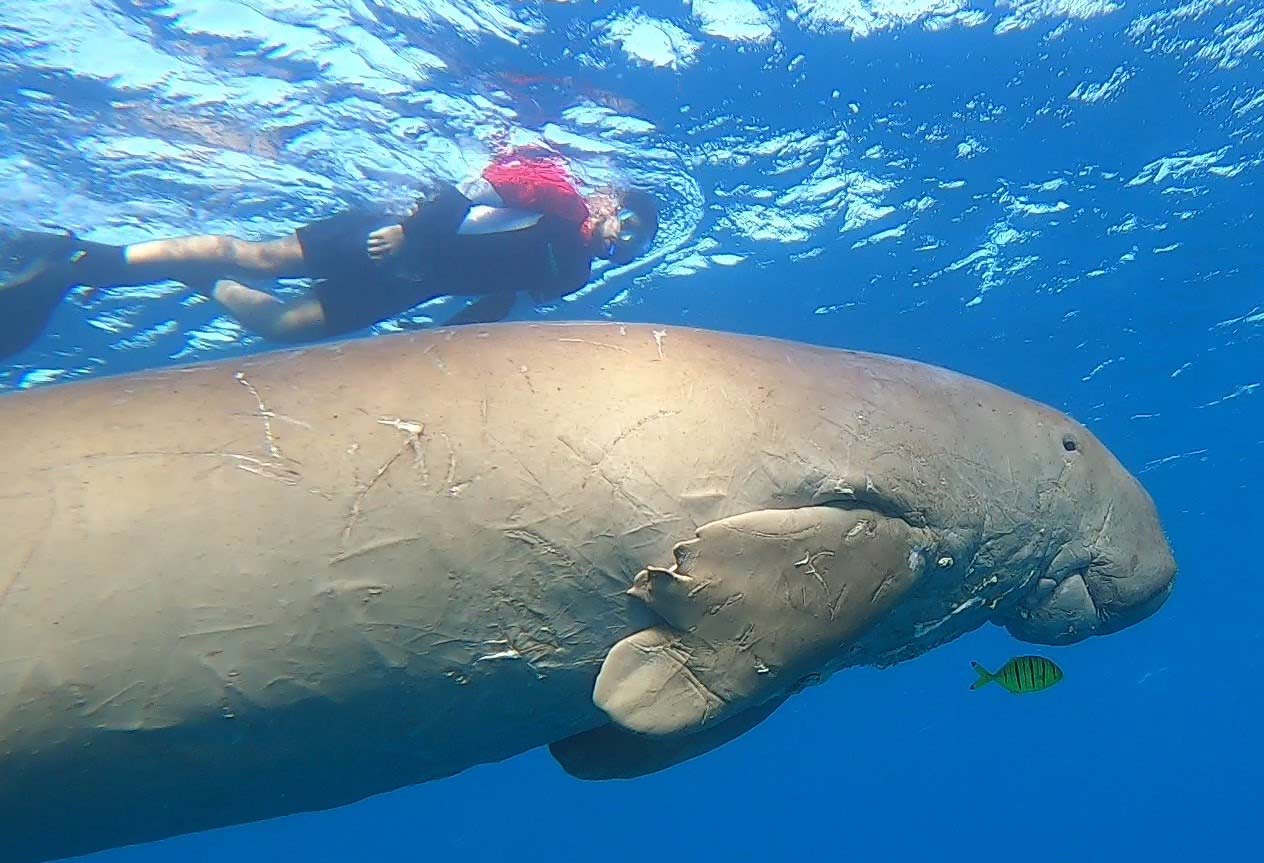
Around 280 Km south of Hurghada and perfect destination to start our trip. Around Marsa Alam there are the best dive sites at Red Sea, such as
Elphinstone
One of the best dive sites on the world, located 30Km North of Marsa Alam, 12Km of shore. Elphinstone is very tiny reef as cucumber shaped reef hanging at deep water which offering spectacular wall drift diving with wonderful coral . In each end an 80m long, slender plateau reaches out into the blue. Each one has got its own significant main characteristic feature.
The north plateau has a crack across the very tip creating a separate pinnacle in the extension of the plateau
The south plateau has an arch-like tunnel running through the base where according to the legend a Pharaoh is buried in a sarcophagus. How this legend started off is not hard to grasp when visiting the tunnel. In its middle a perfectly shaped block in the right size resembles a coffin or sarcophagus.
The east and the west walls are equally good, so the sun angle is the main consideration. Generally, it can be said that after a visit to the end of either plateau it’s worth getting to a shallow depth as soon as possible
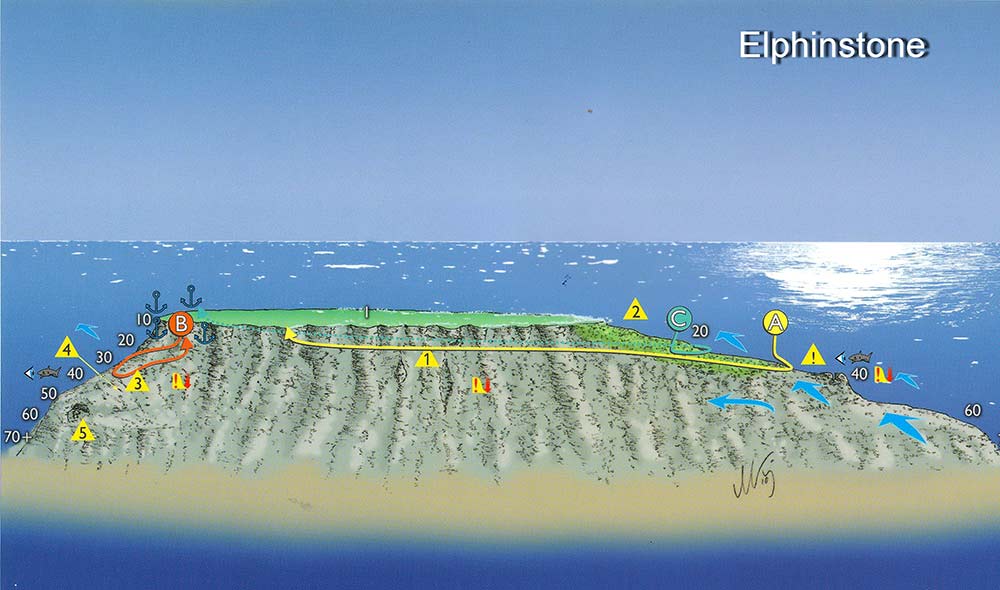
Shaab Sharm
located 40Km south of Marsa Alam,
Shaab Sharm is kidney stone-shaped reef with Sloping walls, at east tip is plateau covered by soft coral, arrange of hard coral, you can spot Manta and Oceanic shark. Under the plateau is large overhead cave at depth 50 m to 50 inside
Marsa Alam offers also great shallow dive such as Abu Dabab area, Marsa Shana, Shaab Marsa Alam

Safaga
Safaga is one of the oldest and most important port cities at the Red Sea. Located 60 Km south of Hurghada.
Safaga area astounding reefs to explore. like the walls and plateaus of Abu Kafan, and Panorama. The coral garden around Middle Reef and Shaab Sheer, together with a few wrecks that are worth mentioning such as Al Kahfain, El Tor and the haunting Salem Express.
We visit Safaga area while depart from Hurghada to the South of the Red Sea along routes
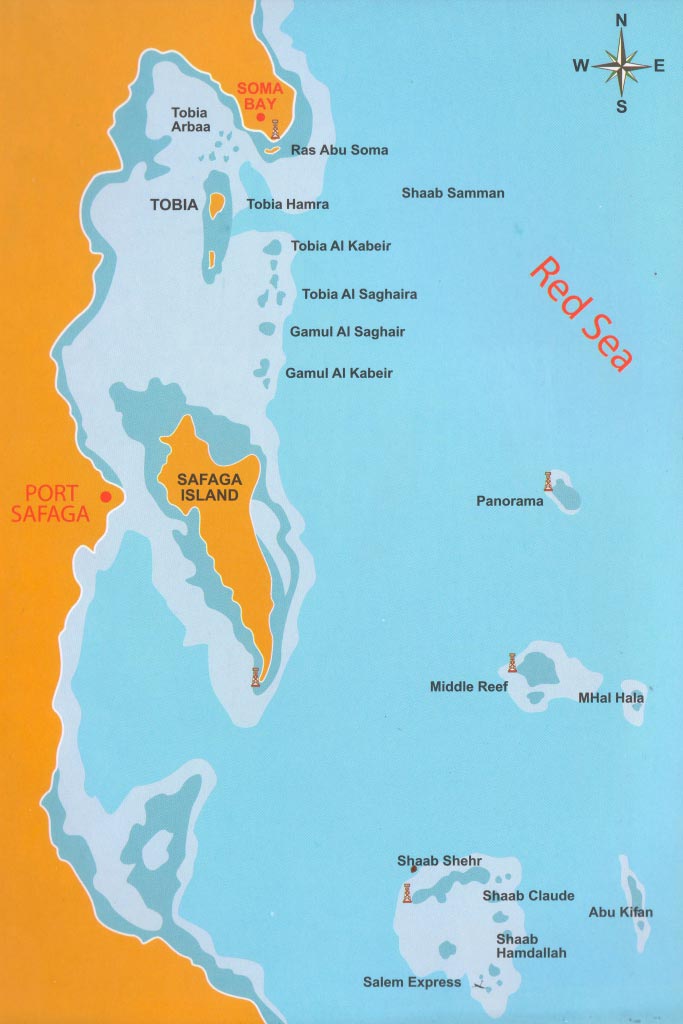
Salem Express
One of the greatest shipwrecks at Red Sea because of the tragedy story and wreck condition and Marin life
A passenger ship with a length of 100 meters. At the end of the journey from Jeddah in Saudi Arabia to Safaga, with a huge number of pilgrims returning from Mecca, mide night between 15-16 December 1991, she sank. The ship hit the Hyndman reef. As a result of the blow, a hole was formed in the bow and a trap door was opened at the stern of the ferry. Water began to flood the ship from two sides, and it gave a roll to the starboard side. Salem Express sank for 20 minutes, according to official figures, about 470 passengers died, but their real number is probably more than 1,000. Survived only 180 people. This became one of the biggest sea tragedies. Many do not want to sink here, because they believe that this is a tomb and should not be bothered. If you decide to dive into this sunken ship, be very respectful and do not touch anything. There are still a lot of personal things on board, and they should stay there.
The wreck of the Salem Express lies on its starboard side in 30 meters of water. At the bow, the ship’s anchors are still in position and the bow door, which allowed water into the car deck, is still in the open position. The foc’sle still has the anchor windlass winches mounted on it, along with ventilation ducts protruding through the deck. The port side of the vessel, which is facing the surface, has many windows and ports looking into individual cabins, and the companionway runs along the main deck from fore to aft complete with handrails.
Ship’s lifeboats can be seen lying next to the ship on the bottom. The ship’s stern and views of the rudder are stunning! The Samatour Company logo can still be seen on the ship’s funnels. Penetration dives can be made on this wreck.
The wreck hanging at open water which become home for many kinds of fishes, especially micro life

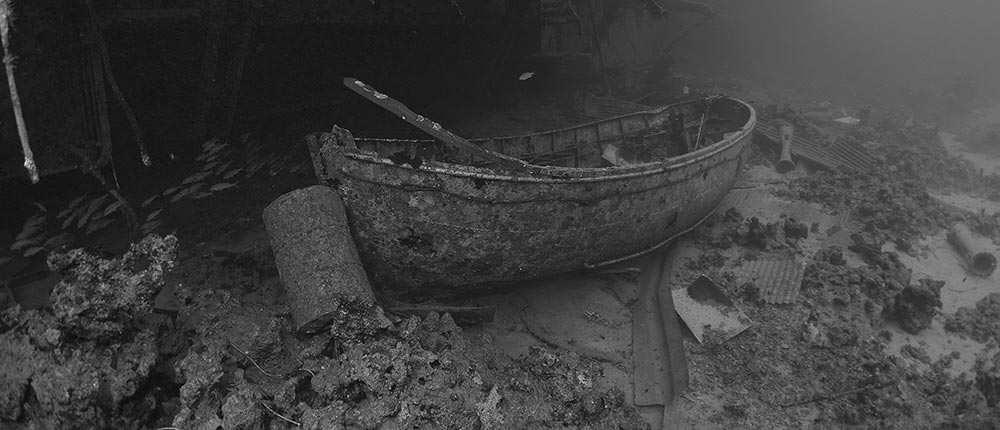
Panorama reef
Huge coral formations raise up from 200m depth, forming vertiginous walls on its sides and a series plateaus in northern and southern corners.
Walla and plateaus covered with hard coral, soft coral, gorgonians, alcyonarian and anemone city.
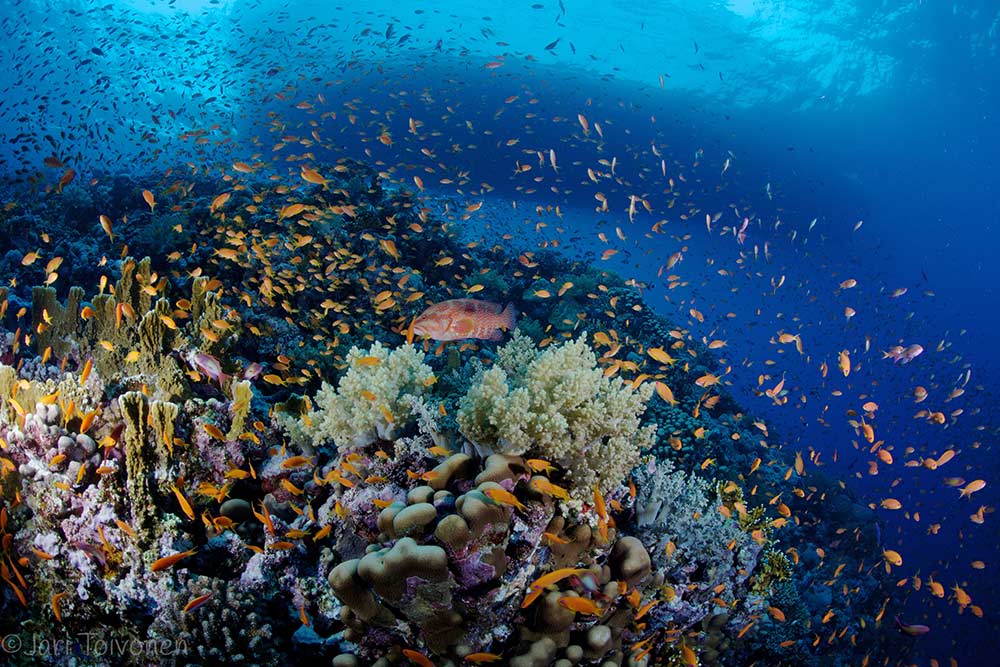
Abu Kafan
Means by Arabic “Father of the depth”. Long, narrow reef rises from 400m depth.
East and west sides vertical walls covered with purple and orang soft coral, black coral, gorgonians, and long whip corals.
North and south sloping plateaus start from 12m slops to 30m before away into very deep water. Both plateaus covered with pinnacles, tables coral, soft coral, and coral garden
Abu Kafan located at open water, strong currents, deep drops offs and a fair chance of pelagic and many fish spices
